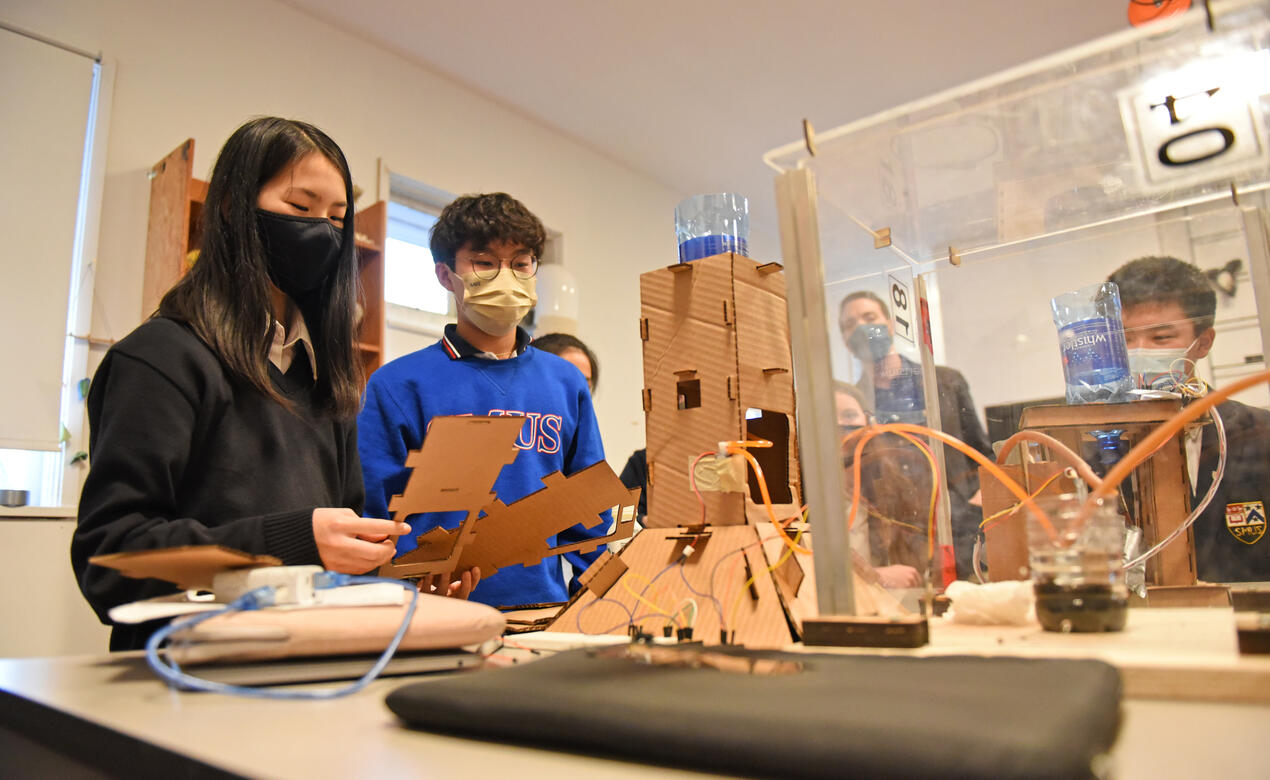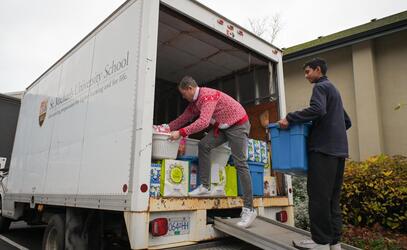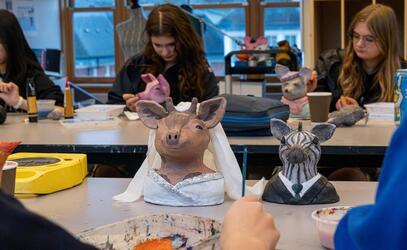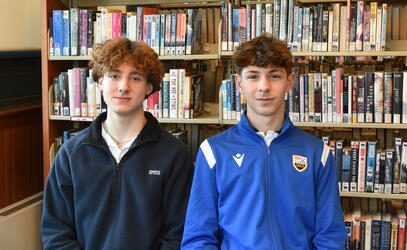
Could you design and build a device that can measure the moisture content of soil, and water a plant when the soil is too dry? It is a challenging task.
Skills and content from the Applied Design, Skills and Technologies (ADST) curriculum are mixed with the Science 9 curriculum this school year in this interdisciplinary (and messy!) STEAM (science, technology, engineering, art and math) project. All of our Grade 9 students are spending several weeks trying to build such a device; rolling up their sleeves, building, breaking, and trying to improve their designs.
A Creative Learning Experience
The solutions students have been coming up with are creative and vary from group to group, but there are a few basic requirements they all must follow: the tower must hold a 1 litre water bottle 15 cm above the ground and deliver water to a small plant whenever the water sensor indicates it is dry.
The tower designs are created in a two-dimensional vector graphics software and the parts are cut out of cardboard or plywood using a laser cutter. The technology allows students to be precise with their measurements and make many iterations with intricate adjustments.
The water content of the soil is measured using a moisture sensor hooked up to an Arduino microcontroller. The Arduino will also control a water delivery mechanism the students design. Learning how to wire the circuitry and code the control software correctly is all part of the hands-on learning.
Building Skills by Building Prototypes
If you walked into the classroom during a lesson, what you would see is the design process in action. Students work in pairs to build prototypes, test their theories, look for improvements, and repeat this iterative process. Do their prototypes fail? Often. Perseverance and collaboration are as much part of the learning as the technical skills acquired. There are always improvements to be made to any design project. One of the co-teachers of the course, Dave Hlannon, often asks students, “Was Steve Jobs done with the iPhone after versions 1, 2, or 3?”
If we think about how to best prepare students for the challenges they face now and the ones they will face in the future there are often a variety of themes that emerge: the ability to problem solve and be resourceful; communicating and collaborating with others; persevering through challenges; finding creative solutions; building strong technical capacity and understanding. These are the skills that our ADST and STEAM curricula are tackling head-on through projects like this one.
As teachers developing this project, we, too, have been practising these same skills. Have we failed at times? Of course. Are we improving? Constantly. Collaboration between the teachers has been a key component and we are excited to see how much further we can push this project to continually improve student learning even more.


